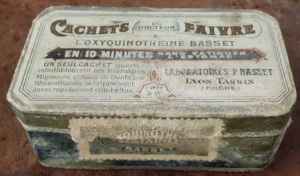

MedFriendly®


Cachet
In the field of medicine, a cachet is an edible capsule or
thin wafer that is shaped like a lens and contains a
dose of medicine or powder that tastes unpleasant. The
outer case is usually made of a rice-flour paste (rice
paper) but other types of starches may be used such
as a combination of flour and water. Like modern day
capsules, cachets were developed as an early method
for hiding the unpleasant taste of the medication or
powder that could sometimes trigger nausea or
vomiting. Some early cachets involved placing the
medication inside jelly covered with bread.
A French medicine box for
storing cachets.
FEATURED BOOK: Davis's Drug Guide for Nursing
The outer covering of a cachet was sometimes prepared, dried, and stored separately for
later use. This is helpful because it prevents someone from needing to prepare fresh
cachets at a momentís notice. When the dried cachets wafers are ready for use, they
are placed on top of water, taken out with a spoon when softened, the medication/powder
is placed inside, the wafer is folded over it, liquid is poured on the spoon (making it easier
to swallow), and the wafer is swallowed. In this way, the outer covering serves as an
effective buffer. Some cachets had more of a sandwich structure, with the
medication/powder enclosed between two layers stuck together with a wet or dry seal.
Although cachets are not used much anywhere because they have been replaced by the
modern day capsule, they are relatively simple to make. However, when they were more
popular, many people used specialized devices to prepare large numbers or cachets,
which including pouring, holding, and sealing devices. Cachet comes from the French
word "cacher" meaning "conceal."
"Where Medical Information is Easy to Understand"™















